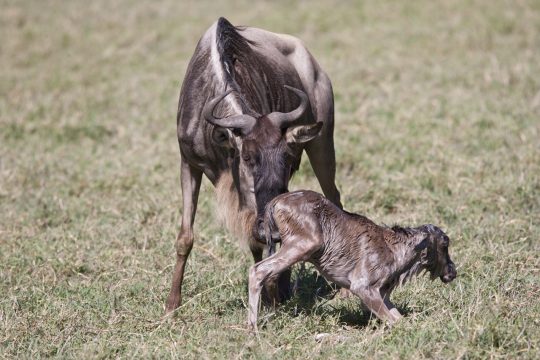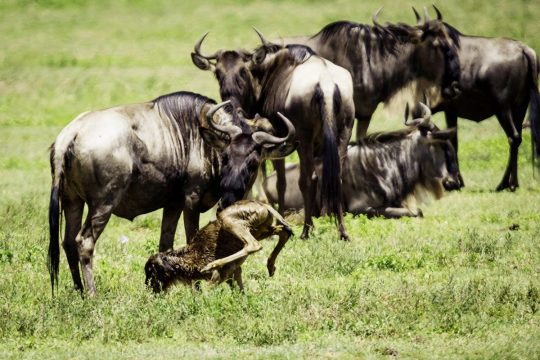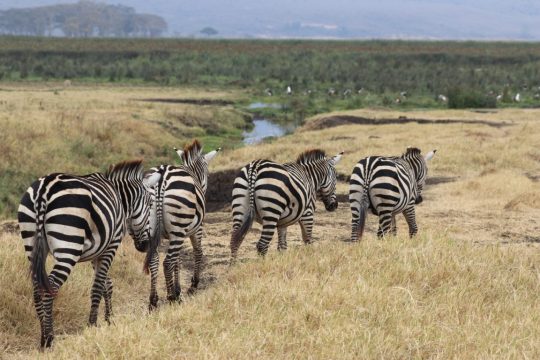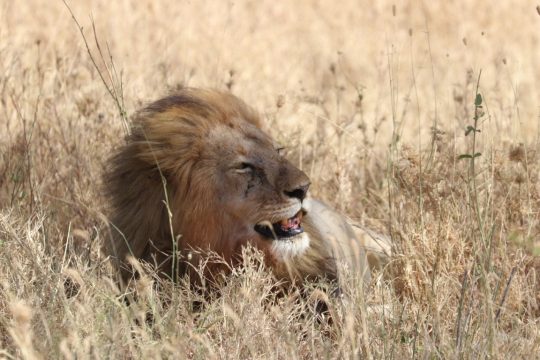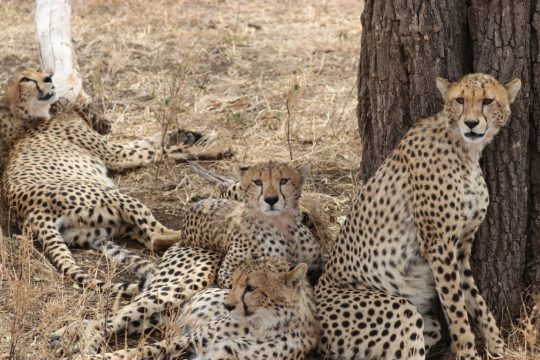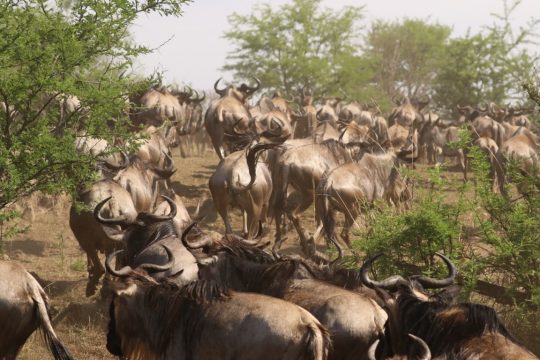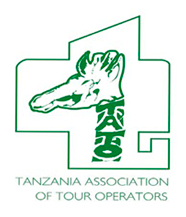7 Days Mid-Range Great Migration Calvin Season Safari
Day 1: Arrival-Arusha
Upon arrival at Kilimanjaro international airport you will be met and transferred to Gran Melia Arusha for overnight on Bed and breakfast
Day 2: Arusha –Tarangire
Breakfast, you will be picked up from the hotel by your safari guide and driven to Tarangire National Park. Enjoy the wildlife. Overnight at Lake Burunge Tented Lodge.
Lunch and dinner provided. Drinking water will be provided every day per person.
Tarangire National Park is almost 3000 sq km in size and is probably best known for its huge numbers of elephants and baobab trees. The name of the park comes from the Tarangire River which crosses through the park. Tarangire is especially spectacular during the dry season (June – November) as wildlife concentrations rival that of the Serengeti (since enormous populations of elephants and other animals are drawn to the Tarangire River as their only source of water). With its varied habitats and permanent water in the Tarangire River the park is home to over 2000 elephants and 500 bird species.
Day 3: Tarangire –Lake Manyara
Today after breakfast, you will be picked up from Arusha by your safari guide and drive to Lake Manyara National Park. For a game drive. Overnight at Kudu Lodge.
Breakfast, Lunch and dinner will be provided Drinking water will be provided every day per person
Lake Manyara is a beautiful little park which is famous for its tree-climbing lions, elephants and large troops of baboons. The park is home to an amazing variety of birds and animals considering its small size. A short visit to this serene park will greatly diversify your safari experience as the lush green jungle habitat is of stark contrast to the other parks you will visit during your safari.
Day 4: Lake Manyara-Ndutu Southern Serengeti
After breakfast drive in Southern Serengeti (Ndutu area where the migration should partly be) in Ngorongoro and enjoy the wildlife. Overnight at Ndutu Kati Kati Tented Camp.
Breakfast, lunch and dinner provided. Drinking water will be provided every day per person provided.
The endless plains of Serengeti are also the setting for the world’s greatest wildlife spectacle – the 1.5 million wildebeest endless migration in search for fresh pastures Each year this huge herd of wildebeest (along with over 200,000 zebra and gazelle) migrate in a clockwise direction around the Serengeti, up to the Masai Mara in Kenya and then back down to the Serengeti to have their young (over 8000 wildebeest are born a day between mid Feb and mid March). Each year they trek over 2,500km and are constantly threatened and followed by some of Africa’s greatest predators. Depending on the time of your visit, your driver guide will be able to share with you where the herd’s current location is at Ndutu
Day 5: Ndutu –Central Serengeti
Today after breakfast you will drive with your lunch box to central of Serengeti national park
Overnight at Kati Kati Tented Camp.
Breakfast, lunch and dinner provided. Drinking water will be provided every day per person.
The Serengeti National Park is the world’s last great wildlife refuge as it contains an estimated three million large animals, most of which take part in a seasonal migration that is one of nature’s wonders. The area covers 14,763 sq kms and the name Serengeti comes from the Maasai ‘Siringet’, meaning endless plains.
Day 6: Serengeti-Ngorongoro.
Have the morning Serengeti and then after lunch drive to the rim of Ngorongoro Crater,
Overnight at Ngorongoro Rhino Lodge.
Breakfast, lunch and dinner provided Drinking water will be provided every day per person.
There are several documented resident lion prides just within a one-hour game drive radius from Seronera. During the dry season, the resident prides begin to shift west and north in their territories and concentrate in the central region of the park. The dry season is a particularly good time for lion viewing in the Central Serengeti The Central Serengeti is also one of the best areas in Africa to spot the elusive leopard. You may be lucky enough to encounter this majestic cat in the branches of the sausage trees that dot the banks of the Seronera River.
Day 7: Ngorongoro-Arusha
After breakfast, descend into the crater for a crater game tour.
Later on you will drive to Arusha for drop off or proceed to Kilimanjaro International airport for your flight back home. Breakfast and lunch provided. Drinking water will be provided every day per person.
Often called the eighth natural wonder of the world, the Ngorongoro Crater is the largest intact crater in the world. About 2 million years ago the Ngorongoro volcano erupted, and its walls collapsed. The volcano floor sank to create a natural enclosure with its 600m tall walls. Now, at over 19 kilometres wide, Ngorongoro Crater is filled with great areas of acacia forest, hippo filled swamps and open grasslands. These different habitats contain over 30,000 animals – including elephants, warthogs, flamingoes, magnificent birdlife, the rare black rhinoceros and all the predatory cats. The Maasai can also be seen grazing their cattle alongside the buffalo and wildebeest.
Safari cost
| 2 pax | USD$ 2,810 Per person |
| 3 pax | USD$ 2,500 Per person |
| 4 pax | USD$ 2,345 Per person |
| 5 pax | USD$ 2,250 Per person |
| 6 pax | USD$ 2,185 Per person |
| 7 pax | USD$ 2,140 Per person |
This safari package includes:
- Transportation in a safari specific vehicle (Toyota Land Cruiser 4X4)
- Accommodation as per itinerary
- Service of professional driver-guide who speaking English, Spanish, French, German and Italian language depends with your favorable language
- Park entry fees
- Drinking water will be provided every day per person day
- Meals as per the itinerary
- Crater service
- Private Safari
This safari package does not include:
- International flights and visa fees
- Personal Travel/Baggage Insurance
- Tips for the driver guide and any porters at the lodges
- Unexpected increases in National Park/Lodge Fees by the relevant authorities
- Bank Fee/charges in sending your money to Tanzania and getting USD cash out in Tanzania
Our Payment Policy
- 20% Deposit is required to confirm a booking,
- The final payment of 80% will be due one month before you arrive so we have enough time to get all the park permits, vouchers and GRR permits for your trip to go smoothly.
- Should the booking be done with less than 30 days before arrival full payment is required to confirm the booking
Cancellation Policy:
Cancellations must be received in writing by emailing us at. All suppliers charge cancellation fees, which they in turn pass on to us. Therefore, reservations that are cancelled reduced in length of stay or in number of people, are subject to cancellation fees.
If you must cancel before your trip, your money will be returned, less the cancellation fees (below).
Following is the scale for cancellation charges:
- 20% (of the total cost of the trip) if made more than 60 days prior to arrival date of which your tour was going to start.
- 50% (of the total cost of the trip) if cancelled between 31 and 60 days prior to arrival date of which your tour was going to start.
- 75% (of the total cost of the trip) if cancelled between 15 and 30 days prior to arrival date of which your tour was going to start.
- 100% (the total cost of the trip) if cancelled 14 days prior to arrival date of which your tour was going to start.

